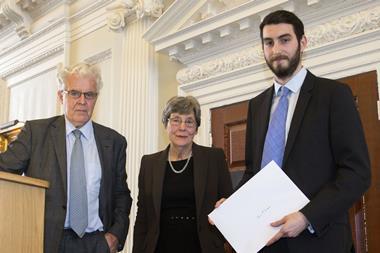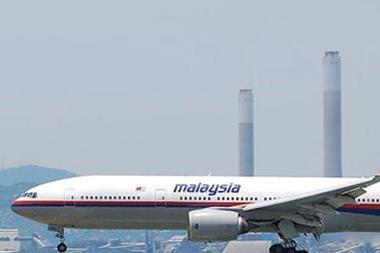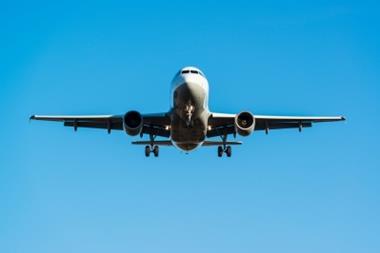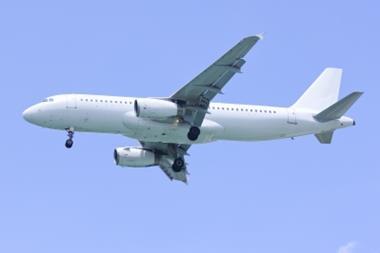The airline faces an unprecedented challenge to rebuild its reputation following two back-to-back crises

It is difficult to recall a crisis such as the one in which Malaysia Airlines finds itself, having lost 537 people in two extraordinary incidents four months apart.
The disappearance of flight MH370 on 8 March 2014, in which 239 people went missing and are presumed dead, was still lingering in public consciousness when a missile allegedly shot down Flight MH17 over war-torn Eastern Ukraine on 17 July, killing the 298 passengers and crew.
Whether the airline can be held responsible for either tragedy is unclear, but the brand’s public image has suffered considerably, compounding existing financial difficulties.
Prior to the MH370’s disappearance, Malaysian Airline System Berhad (MAS) reported consecutive losses since Q1 2013, with a net loss of €273m for the 2013 financial year. The carrier has since reported a net loss of €103m for the first quarter of 2014 - a significant increase from the €64.9m net loss reported in the previous corresponding period.
Malaysia Airlines chief executive Ahmad Jauhari Yahya said: “The net loss this first quarter is not unexpected. However, the results were made worse with the impact on air travel in general following the disappearance of MH370. The entire market has reacted by slowing down demand.”
The airline cited “negative sentiment” as one of the reasons for its poorer financial results of Q1 2014 and it would be no surprise if the Q2 results continue this negative trend following the MH17 incident.
Relationships in real time
As Malaysia Airlines handles a difficult situation with the families and friends of the passengers lost on both flights, it also faces the challenge of turning its financial fortunes around and restoring investor confidence - beginning with the process of rebuilding the brand’s reputation as a safe and successful airline.
Recovering from a crisis arguably starts with decisions made by those at the epicentre of the crisis, dictating the firm’s ability to manage the immediate situation with affected parties while ensuring business continuity. In the case of flight MH370, the airline was criticised for communicating via SMS with relatives once the passengers were presumed dead.
However, Laura Meadows, head of business continuity solutions at business continuity and intelligent communications provider xMatters, says the advent of social media has transformed the dynamic of crisis management for firms, especially if the event attracts global interest.
“Social media is so fast - relatives could find updates on Twitter before Malaysia Airlines had an opportunity to contact them,” says Meadows.
“In this scenario, 10 years ago, Malaysia Airlines would have been able to call everyone and send the message out to the people who mattered before it hit real-time media. In this day and age, that’s not possible, as we have 24-hour news sites, mobile phone apps and the ability to receive SMS updates if you sign up to a particular hashtag on Twitter.”
Meadows believes the airline managed the sensitive nature of the crisis well, considering the global interest it attracted on social media and the difficulty in containing it.
She thinks other organisations can learn from the event: “One of the most important steps an organisation can take in this situation is to give the relevant people an update and tell them when to expect the next update if there are no changes in the situation,” she says. “That manages expectations because they know they will hear from you in two hours’ time even if you have nothing to say, but it keeps it consistent.”
However, a Malaysia-based risk management consultant (who preferred to remain anonymous) says the immediate handling of the Ukraine disaster was less impressive. The consultant believes it could have profound consequences for the airline and the Malaysian government, which, at the time of writing was planning to take a majority stake in the airline.
“This will seal much of the impression of foreign companies and governments about Malaysia,” he says. “First impressions were not good, with a Malaysia Airlines spokesperson quoted as saying the airline could not confirm reports by international news agencies and was still ‘checking it out’”.
Malaysian authorities had previously come under criticism for a lack of co-operation in the efforts to find the MH370 plane, particularly from Chinese officials. This compounded the crisis for the airline, which publicly maintained its commitment to the search. The lack of communication and cohesion between the government and the airline could damage perceptions of the country and the airline for foreign firms, governments and investors.
Nevertheless, the Malaysia-based risk consultant told StrategicRISK, he expects the perception of MH17 being brought down over Ukraine to be “much more comparable to that of AF447”, the Air France flight that went down in the Atlantic Ocean in 2009, killing 228 people. “[The incident] will be seen as unrelated to Malaysia Airlines itself,” he says.
Malaysia Airlines is also likely to find itself embroiled in potential compensation claims brought by relatives of the victims. According to the Montreal Convention, which governs aviation liability in cases of airline incidents, an airline’s liability is limited to €131,174 per fatality if the airline can prove it was not negligent. If it cannot prove it was entirely without fault, its liability may be unlimited.
However, as Amin Hamzavian, vice-president at international aviation consultancy AvLaw says, the airline and the relatives of victims will need patience. “The circumstances in which MH370 and MH17 were lost will likely mean a prolonged settlement and for legal and insurance ramifications to be fully realised,” he says.
“I read of MH17 being considered a war crime, or even an act of God, which you can imagine will open a Pandora’s box of legal and insurance issues.”
Hamzavian adds there is “no doubt that the co-operation and financial intervention of the Malaysian government will be a critical determining factor in the long-term sustainability of its national airline”.
Last week, trading in shares of Malaysia Airlines halted after Malaysian state investment firm Khazanah Nasional Bhd, which used to hold a 69% majority stake in the airline, announced a proposal to buy the remaining shares of the airline and delist the company as it looks to make a complete takeover, taking it fully into government ownership.
Khazanah said: “Nothing less will be required to revive our national airline to be profitable as a commercial entity and to serve its function as a critical national-development entity”.
A rebrand as good as a rest?
Although the state believes a complete takeover is the best solution to reinvigorate the failing airline, critics said the government’s incapability in the handling of missing Flight MH370, which compounded the crisis for the airline, would inhibit growth.
The next move for Khazanah, if it completes the takeover, will arguably be to attempt to regain public confidence. Although it could yet come to light that neither of the lost airplanes were due to Malaysia Airlines’ negligence, some commentators believe a rebrand is the most realistic solution to the airline’s problems.
Hamzavian says internal restructuring was inevitable for reform to take effect and agrees the airline must now overhaul its public image.
“Such technical and operational considerations must subsequently translate to commercial gains, which will happen only if the Malaysia Airlines brand can once again be trusted by the
travelling public - so at some point, it essentially becomes a PR exercise,” he says. “You just have to look for a Heart Foundation ‘tick’ of approval on the McDonalds menu to realise the importance of public perception.”
Comparisons with former US airline ValuJet come to mind. The airline merged with Airways Corporation to become AirTran Airways after a series of safety incidents and the crash of Flight 592, in which all 110 passengers died, during a routine flight from Miami to Atlanta.
“Within an aviation context, a case in point is that of ValuJet, an American low-cost carrier that returned to profitability after an aircraft hull loss where all on board perished,” says Hamzavian.
“After the 1996 incident, the airline rebranded and quickly returned to profitability - it was even awarded for being the best low-cost airline in the US the following year, so it’s not impossible to recover from tragedies such as these.”
However, Hamzavian acknowledges the circumstances surrounding ValuJet’s Flight 592 crash are different to today’s interconnected world. “The key difference between then and now is the ease with which opinions can change owing to the speed at which information is delivered.
“In this age of social media, perceptions can change overnight and, although those views may not necessarily be reality, they are in the eyes of the perceiver,” says Hamzavian.
Harnessing social media
The globalised environment in which modern corporates operate, where information travels fast and public opinion is voiced and heard en masse through social media platforms, presents Malaysia Airlines and others with an unprecedented task. It underlines the significance for multinationals and global corporates to understand the value and power of social media.
“Social media is sometimes seen by businesses as the funky technology that requires young people,” says Meadows.
“Many organisations put junior people on [social media] because of the nature of the technology and because they think younger people are better at using these platforms. However, these junior members of staff are less strategically aware and have little understanding of the corporate running of a business; they are good with technology only because they grew up with it.”
As the corporate world adapts to an increasingly socially connected environment, there have been plenty of communications and public relations crises from which to draw examples.
The disappearance of MH370 and the shooting of MH17 were no exceptions. However, these blunders came from Malaysia Airlines’ competitors, rather than the airline.
The highly sensitive nature of both incidents called for compassion, which Malaysia Airlines understood, according to Meadows, but certain competitors failed to recognise this.
In the week after MH370 disappeared, when the world’s media focused on the search for the missing Boeing 777, a renowned and prestigious airline launched a visual campaign featuring a picture of an ocean with the caption: “Escape the commute and discover the Indian Ocean”. The airline subsequently apologised for the ill-timed and tasteless campaign.
In a similar fashion, another well-known carrier updated its Facebook and Twitter accounts a day after the crash of MH17 by stating that the airline would not be flying over Ukraine. An hour later, the firm offered condolences to the relatives of those on board the flight. The poor timing and lack of sentiment was noticed instantly on social media and, as a result, the firm offered an apology for its “insensitive” posts. The upshot has seen more positive sentiment directed towards Malaysia Airlines rather than its competitors, according to Meadows.
“Although Malaysia Airlines has suffered as a result of the crisis, proactive communications have resulted in a more positive customer sentiment. This is over companies that have seen a backlash through social media, which has been perceived to be piggy-backing on the back of it,” she says.
“When MH370 went missing, Malaysia Airlines took away the company branding on its Twitter page, and changed its logo to grey and black - not to make it feel sombre, but it’s a clever move because people don’t want bright colours and adverts in their face at this time.”
Subsequently, Malaysia Airlines offered no-questions-asked and no-penalty refunds on any flight booked with it for more than a month after MH17 was shot.
It also dedicated its social media platforms to the late passengers and their relatives and withdrew its commercial marketing campaigns, which helped eased the negative sentiment towards the airline. These positive actions have helped raise the possibility for the airline to continue doing business with its current brand, having embraced public sentiment using compassion and sensitivity.
Accentuating the positive
“A rebrand works best when it is done for positive reasons. When you are doing it out of a crisis, you are effectively trying to cover up what happened,” says Meadows.”If you embrace the crisis and get some positive sentiment from an incident, that potentially holds more value than a rebrand.”
However, converting public perception may take longer than Malaysia Airlines has time for, in view of its long-term financial difficulties.
Chairman of the Malaysian Association of Risk and Insurance Management Mohamad Bin Mohd Zain says the nature of the aviation industry means customers have a heightened need for safety and are unlikely to forget the events.
“As a passenger, I will always look at a carrier’s safety track records before deciding to board a plane,” he says.”In this case, the likelihood of a Malaysia Airlines airplane going down has shifted from ‘rare’ to ‘possible’”.
A crisis of such proportions is unlikely to fade from public consciousness soon. The fatal flights that have tarnished the airline’s name will arguably be the final blow for the struggling carrier while it keeps the name Malaysia Airlines, despite the state-funded takeover.
The value of a brand’s reputation has increased with the emergence of social media and globalisation, where news travels fast and opinions are shaped quickly. As Hamzavian points out, the success of Malaysia Airlines depends on its ability to regain public trust - although a rebrand may not necessarily eradicate the reputational damage it has suffered following two catastrophic events. Asa Gibson




















No comments yet